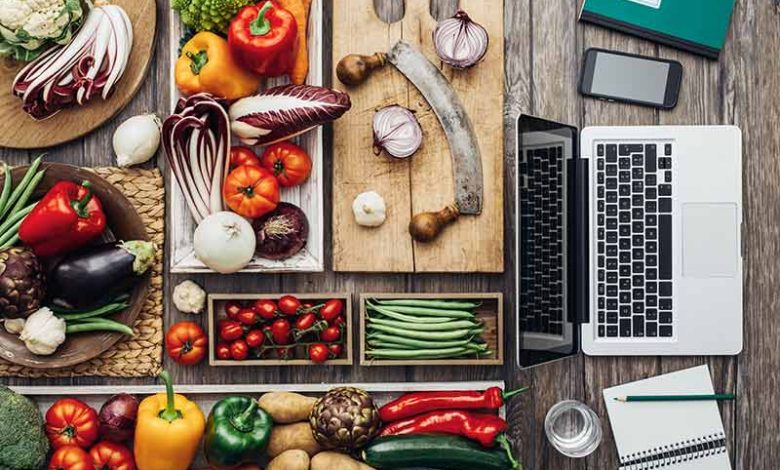Way to Sell Food Online: Starting Food Business

1. Identify your niche
You need to figure out what your niche is. This is the first step, whether you already offer food in person or have a concept that you think would work.
You might begin by looking at current culinary trends. Conduct extensive study to determine the types of foods that your target audience is interested in. You can use social media or seek advice from culinary bloggers. After you’ve completed your product study, you’ll need to look into your audience and competitors.
The food market is busy, and you need something to distinguish yourself from the other vendors. Are you a high-end gourmet food store? Is it your thing to eat vegetarian food? It will be simple to attract customers if you define and accept this.
Your marketing and branding efforts will be more focused if you know what your specialty is. The tiniest element, such as how to reach out to your target market, as well as colour cues and copy, will be influenced by the niche you choose.
2. Legal and Regulatory Environment
Following local restrictions in your jurisdiction is the next step now that you know what you’ll be serving and to whom you’ll be selling them. Food laws in the United States, for example, differ from those in the European Union.
Cottage Food Laws, which govern the production and marketing of processed foods in the United States, must be understood by American food vendors. Cottage food laws differ by state, but there are a few basic conditions to meet in order to gain licence. These are some of them:
Your state health department will inspect your kitchen once a year.
- A state health or agriculture agency clearance permit
- A current state-issued company licence
- Demonstrate that your kitchen and storage areas meet the space’s sanitary criteria.
- There are no pets allowed in the kitchen, whether at home or in a restaurant.
You can’t claim ignorance when it comes to food standards. You must check with your local authorities and follow all applicable rules governing the food industry.
3. Find a Vendor
When selecting a food supplier, examine the delivery schedule, cost, minimum order quantity, and product quality. As a food vendor, finding the correct supplier could save you time and money in the long run.
You can identify suppliers who specialise in your essential ingredients using sites like Food Master. Look through the marketplace, make a list, and then, if necessary, request references and certificates.
Labeling, branding, and packaging are all important aspects of product development.
The visual appeal of your business is also crucial to its success. You’ve decided what you want to sell and how you’re going to make it. Customers will be more likely to recognise and purchase your food products if you have a well-branded food business. It provides customers with choices and increases client loyalty. I buy what I like and become loyal to it over time. Here are some of the most important characteristics of branding:
Name of the company
A memorable and easy-to-spell business name is great. You can be creative if you want to, so solicit feedback and be inventive. Pick a clear and straightforward name that is unique and memorable as a starting point.
Colors
The colour of your brand conveys to your customers. Food companies, on the whole, favour bright hues. They’re bright and inviting, and they have the potential to entice individuals to make rash purchases. Healthy foods are represented by green, whereas sweets are represented by white and pink, and decadent foods are represented by yellow and orange.
Regulations for Packing
You should also think about local restrictions when it comes to packaging. The National Institute of Standards and Technology (NIST) mandates that your packaging include the following elements for American businesses:
- Your firm’s name
- Any other suppliers’ names
- The weight of the package
- The product’s active components
- Expiration dates
This information should also be included in your product descriptions on the internet. You might also include additional dietary facts if desired. People will be aware of the product’s health benefits in this manner.
5. Create an online store
It’s time to set up your online business now that you’ve found the proper product and are ready to create it.
This is, without a doubt, the most crucial step in the food-selling process. You have two options: either choose an online supplier or develop one yourself.
Marketplaces on the Internet
You can join several online marketplaces and take advantage of their existing infrastructure to expand your food business. Amazon is the first platform that comes to mind.
Setting up an Amazon account as a food vendor is not easy. You must meet the requirements for this category.
On Amazon, you may sell food.
Amazon is one of the most well-known merchants in the world. In 2017, the firm bought Whole Foods, boosting its grocery and food market share.
According to Statista, gross product sales of food and beverages on Amazon are expected to exceed $23 billion in 2021.
6. Marketing: Boosting Your Business with Existing Channels
The creation of a marketing strategy will be the next step in establishing your food business. This phase is critical because it will enable you to expand your business to new heights. Whether you already have clients or not, you’ll need a marketing strategy to propel your company to the top. Here are a few suggestions to get you started:
Marketing on Social Media
For any business, social media marketing has become a requirement. The global population was 7.8 billion people as of December 2019. In the same time period, there were 3.725 billion social media users worldwide.
Between October 2018 and January 2019, the number of social media users increased by 328 million. This equates to approximately 10 new social media members every second.
Source: ecommerce platforms , online selling platform